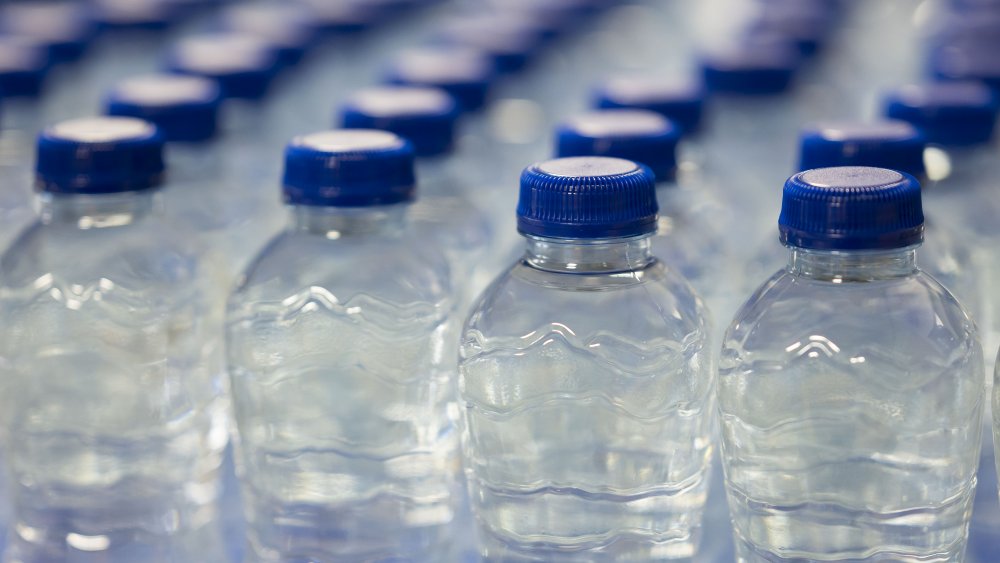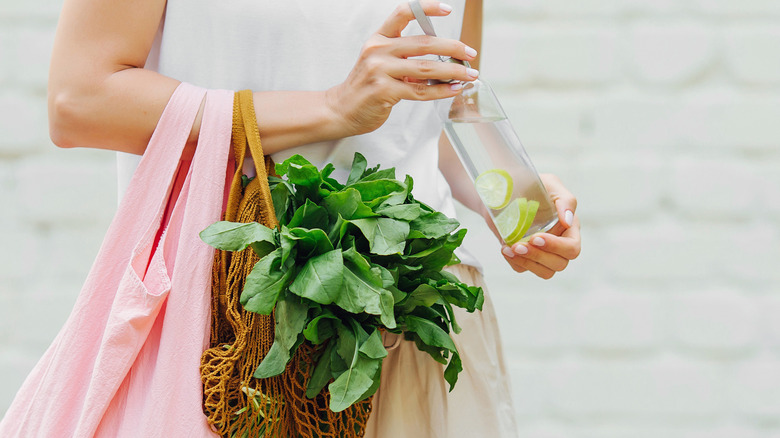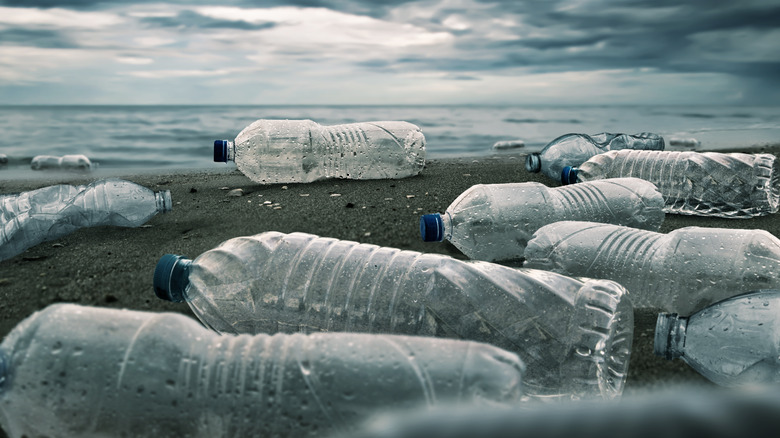The Real Difference Between Tap Water And Bottled Water
An Arizonian tech firm has found a way to convert Dubai's desert air into an Olympic Swimming pool's worth of bottled water annually, reports BNN Bloomberg. But for Americans, drinking desert air will be an exception to the rule. Food and Water Watch estimates that up to 64% of bottled water in the United States comes from municipal water systems. That's troubling when you consider that companies charge 30 times more per gallon for bottled water than tap water.
Like it or not, we live in the age of designer water. Thanks to climate change, you can enjoy $90.00 bottles straight from melting Norwegian icebergs (per The Guardian). If that's not good enough, feel free to dish out $402.00 for a bottle harvested from Hawaiian seawater (per In a Bottle). Or you could invest $60,000 in a bottle covered in 24-karat gold. It's worth noting, of course, that even buying cheaper options can cost you a pretty penny. Using Amazon prices, The Balance estimates that an adult who drinks between 91 and 125 ounces of water daily would spend between $1,000 and $1,400 on bottled water in a year.
Despite the expense, consumers want it. In 2018, bottled water was the most popular beverage in the United States, according to a report from Statista. All this begs the question: can we justify the hype? What is the difference between tap and bottled water?
Can bottled water be more dangerous than tap water?
If you believe the EPA, 92% of tap water in the United States is safe, reports The Conversation. But in a city like Flint, Michigan, where contaminated drinking water was found to have significantly increased fetal deaths, bottled water is your only option (per The Washington Post). Flint's not unique. Per Science, during Flint's 2015 water crisis, 21 million of us were drinking tap water contaminated with leads, coliform bacterias, nitrates, or arsenic. In 2017, for example, Pittsburg residents had to boil their water to kill off a diarrhea-inducing parasite. Newark, meanwhile, has discovered potentially carcinogenic haloacetic acids in its water. And water supplies in Brady, Texas contain dangerous amounts of the bone-cancer causing radium (per Business Insider).
But bottled water isn't automatically safer than tap water. It may simply be a lose-lose situation. That's because in the United States, the EPA regulates all tap water, but the FDA (which regulates bottled water) fails to regulate water packaged and sold within a single state, leaving 60 to 70% of bottled water sold within the states significantly unregulated (per Diffen).
Bottled water may also contain dangerous levels of chemicals and bacterias (per Time). Popular brands of bottled water, such as Aquafina and Dasani, may also flood your insides with microplastics (per Business Insider). Some scientists are concerned that they may expose us to chemicals that may be harmful to reproductive health and cause developmental delays (per The Washington Post).
When you drink bottled water, this is what happens to the environment
Tap water may or may not be healthier for you than bottled water. But it's hands-down better for the environment. The processes that go into treating tap water and removing harmful chemicals no doubt generate an environmental impact. But this impact pales in comparison to the environmental footprint of bottled water, especially single-use bottled water systems, which consume between 11 and 90 times more energy than tap systems (per the Massachusetts Water Resources Authority).
According to the Water Project, roughly 80% of plastic water bottles in the US are not recycled. Instead, they become trash and either take 1,000 years to biodegrade or produce toxic fumes while being incinerated. Then there's the fact that we're using 17 million barrels of oil a year to produce the bottled water that we consume. Finally, it takes at least 1.39 liters of water to produce a single liter of bottled water, according to NPR. The Water Project puts that figure at 3 liters.
So, next time you're itching for a bottle from a melted, Norwegian glacier? Maybe resist the temptation. Especially if you're one of the 92% of us who enjoys healthy, regulated tap water.


